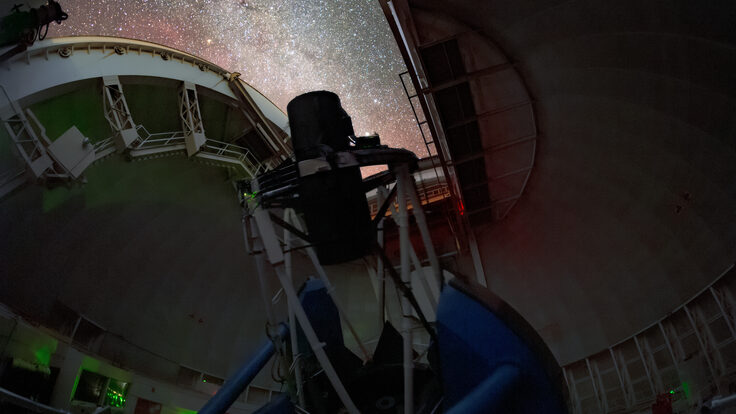Party poopers
 Photo: Diana Rogers, SLAC |
Busloads of new Stanford graduates and their families admired the field of golden grass on SLAC's eastern-most hill on a sunny Saturday in May. But their stunned tour guides looked in dismay as they sought 50 bright red balloons, intended to outline the 100,000 square feet of the future Linac Coherent Light Source (LCLS) building.
Earlier that morning, SLAC volunteers had fixed the helium-filled balloons above the freshly mown grass to give an impression of the planned building's size. The LCLS building will house the controls of the world's first "hard" x-ray free electron laser, which generates precisely-controlled, high-intensity, ultrashort x-ray light pulses using a high-energy electron beam.
Sadly, stronger-than-expected bay winds knocked the helium-filled balloons onto the dry, prickly grass, and all except one popped before the first tour began at 1 p.m., leaving the lone balloon to greet the guests.
But never underestimate the tenacity of SLAC physicists. For a special event twelve days later, they outlined the future LCLS site with orange plastic fencing and blue balloons mounted on tall stakes to create a life-sized map of the structure that will take shape for the facility's start-up in 2009.
"This time, they all survived like a charm," says SLAC physicist Paul Phizackerley, who came up with the idea. Guests gazing over the same hill can now see more than just grass growing.
Monica Bobra
Click here to download the pdf version of this article.






